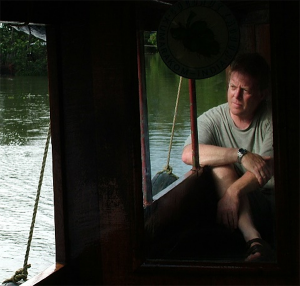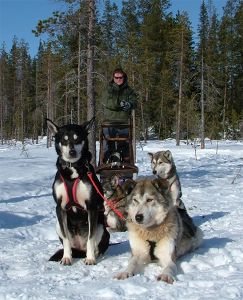
Research, holiday, or confusing motion with activity?
On a kettuvalem in the backwaters of Kerala, India
A few years ago, more by accident than design—at least on my part, fortunately my agents were more focused—I found myself sitting on an 11-book deal.
They—my agents, who were then Pat Kavanagh and Rosemary Canter at PFD—had separately submitted two of my books to publishers. One was a work of historical fiction set during the French Revolution, featuring a character called Nathan Peake who operated as both a British naval officer and a spy, or more politely, a secret agent, in Paris during the Terror. The other was a children’s book which I vaguely hoped might be the pilot for a series. I had never written a children’s book before.
Considerably to my surprise, and probably my agent’s, the children’s book resulted in a 5-book deal with Hodder Children’s Books, an imprint of the publishing giant Hachette. The series was to be called The Mysteries of the Septagram featuring an 11-year-old girl called Jade who was the result of a lab experiment to produce designer babies. This had given her certain mental powers which were, if not exactly magical, at least very much out of the ordinary—and there were six other kids just like her. The series is about Jade’s search for her siblings and the attempt of their ‘father’, a scientist called Kobal, to bring them together for his own more sinister reasons.
I’d just about got over the shock of this when I heard that Headline—another branch of Hachette but dealing in adult fiction—had decided to commission the other book as part of a three-part series, which was later extended to six—but they had to fit into the genre of nautical fiction.
This was something of a jolt as the first book was located mainly in Paris—even under Paris, because several chapters were set in the labyrinth of catacombs that were known collectively as the Empire of the Dead. However, I had always been a reader of nautical fiction. The first novel I’d ever read was Treasure Island by Robert Louis Stephenson, the next Masterman Ready by Captain Frederick Marryat and after years of reading Hornblower and other heroes of the genre, I’d become addicted to Patrick O’Brian’s series about Aubrey and Maturin, reading each of them at least two or three times. On the downside, Patrick O’Brian is the acknowledged master of the genre—how could you possibly follow a writer like that?
But the first challenge was the children’s series. I resorted to a mixture of magic and science. I set up seven focus groups each with seven children from seven different schools. They told me what books they liked to read, and why. Empowerment was at the very top.
An obsessive by nature, I was now obsessed with the number seven. So I decided I needed to visit seven magic places around the world, starting in Lappland, travelling by ship, plane, car, reindeer and dog sled, to find the legendary gateway to Hell. This is what I call Research and my son Dermot calls Holiday. His mother calls it Sharpening Pencils, or Confusing Motion with Activity.

DRACULA & FRIENDS: Dracula was my lead dog—actually a bitch—a cross between a husky and an English pointer—said to be the brightest of the bunch. I think it’s fair to say we didn’t get on.
Over the next two years, I went on to confuse motion with activity in India, Cuba, Panama, Transylvania, France, Italy and sometimes back home in Balham—South London. But I did manage to do some writing. Sooner or later, if you’re a writer you have to. The only way I find I can do this is to have a plan. The first thing I do is make a storyboard. Sometimes I draw the whole book and then paint it. I know, this isn’t writing either, but it can help to get you started.
Riding the Rainbow
I always used to start by drawing a house, like when you were a kid. I got this idea from something Graham Greene wrote in A Burned-Out Case – about the work of an architect being primarily to create the framework for people to act out their lives. I thought, maybe this was a metaphor for writing novels and maybe it would work for me.
Now a house is all very well, but the people I worked for—my agents, my commissioning editors and, if I was writing or directing for television, my executive producers—were forever asking me about the ‘arc of the story’. A house isn’t shaped like an arc. It doesn’t really go anywhere, except up and down and around and around—a bit like life. Novels and plays are expected to go somewhere—in an arc.
I particularly admire those writers who take no notice of this and make their stories more like life, but most readers or viewers want stories to go somewhere, to have a conclusion of some sort. To have a framework.
So my basic framework became an arc. Or rather two arcs. One arc was what I knew—about what happens and where the story is going, and who the heroes and villains are, and why they do what they do and where it all ends… The other arc was what I wanted the reader to know.
To make the most obvious point, I might know how my book ends but I don’t want the reader to know. I have to know where I’m going; they just have to trust me to take them somewhere interesting and lead them out the other side.
So—I have to lead the reader on, leaving scraps of information for them to follow in my trail. I have to create characters they care about and with whom they can identify—characters they love and characters they hate, characters they want to win and characters they want to lose. I have to construct obstacles, incidents, dramas. … I have to lead them in and out of labyrinths… I have to take them through the forest.
All these factors have their place in the arc—arcs. And gradually my two arcs evolved into several. I had arcs for my individual characters so I could be sure that the things that motivated them, that drove them on, also drove the plot on, that were consistent with the plot and vice versa. I had back stories for each character that explained why they behaved the way they did. All of these were in the arcs—and many other things too—and so the arcs became a rainbow. The rainbow on my wall.
And that rainbow is what drives me to write. There it is, on my wall, waiting for me every morning—or in one of my many notebooks when I’m travelling. It has colour, conflict, character—and perhaps most of all—a satisfying form. It is what drives me on, step by step. And at the end of the rainbow—who knows. Maybe a pot of gold. But probably not. It’s riding the rainbow that counts.
This is what I teach people when I teach creative writing—to paint their own rainbow and to enjoy riding it. What happens next? I don’t know. You pull it all down and put up the next one?
Paul Bryers has taught creative writing to MA level at Bath Spa, Southampton and Winchester Universities.

